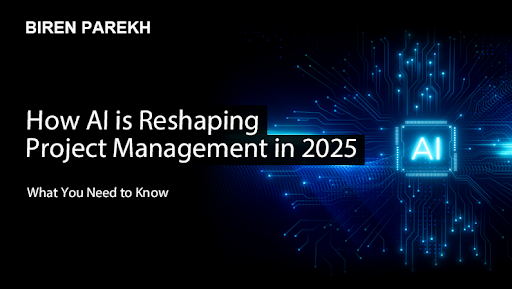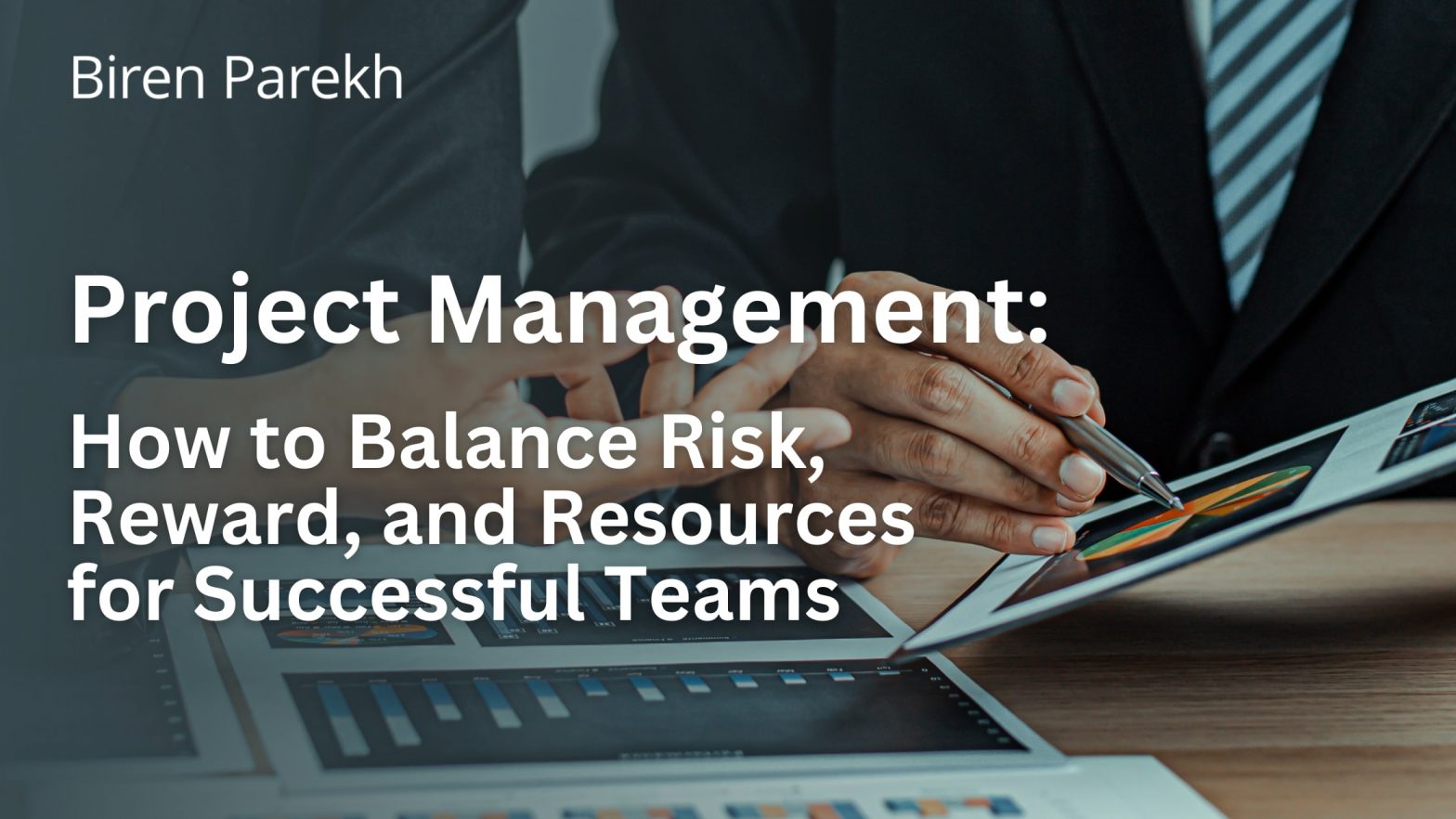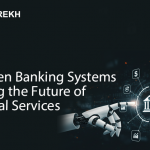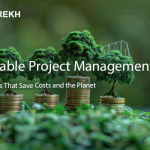A Surreal Moment: Presenting My Book to the Chair of the PMI Board
Green Project Management in IT – Driving Sustainable Innovation
The IT industry is a powerhouse of innovation, but it’s also a significant contributor to global carbon emissions. From massive data centers to power-hungry software, the environmental footprint of technology is growing. According to research, the ICT sector now accounts for 1.7%+ of global GHG emissions, rivaling the aviation industry.
This makes Green Project Management (Green PM) an essential approach for the future. By embedding sustainability into every stage of IT project management, organizations can reduce costs, comply with ESG standards, and align with the Project Management Institute’s (PMI) sustainability vision.
What is Green Project Management?
Green project management is the process of applying proven project management methods while prioritizing environmental sustainability. Unlike traditional approaches that focus solely on scope, cost, and time, Green PM adds environmental and social impact as a success metric.
One of the leading frameworks, GPM P5, assesses projects on:
- People
- Planet
- Prosperity
- Process
- Product
This aligns projects with UN Sustainable Development Goals (SDGs) and ensures IT initiatives deliver lasting value for business and society.
Benefits of Green PM in IT include:
- Lower operational costs through efficiency gains.
- Compliance with ESG regulations.
- Enhanced brand reputation.
- Measurable carbon footprint reduction.
Why Green PM Matters for IT Projects
The urgency is clear:
- Data centers already consume 4.4% of U.S. electricity (2023), projected to hit 12% by 2028.
- E-waste reached 53.6 million metric tons globally in 2019.
- IT energy costs have grown 50% faster than revenue in many sectors.
Green PM addresses these challenges by:
- Reducing energy per compute unit.
- Extending hardware lifecycles.
- Transitioning workloads to renewable-powered infrastructure.
- Embedding sustainability KPIs in project charters.
What is Green Coding?
Green coding is a key pillar of Green PM in IT. It involves writing software that minimizes resource usage and energy consumption.
Core green coding practices:
- Optimizing algorithms to lower computational complexity.
- Reducing unnecessary network requests.
- Using efficient data formats.
- Scheduling heavy workloads during renewable energy peaks.
- Avoiding “feature bloat” that increases processing demand without adding value.
In simple terms, what is green coding?
It’s coding for performance, efficiency, and sustainability, creating software that runs leaner and greener.
Frameworks & Standards for Green PM
To ensure credibility and measurable impact, organizations can adopt:
- GPM P5 Standard – Evaluates sustainability impact across five key dimensions.
- PMI PMBOK7 + ESG – PMI’s integration of environmental, social, and governance principles.
- ISO 14001 & ISO 50001 – Global environmental and energy management standards.
- Green Software Foundation (GSF) – Sets tools like the Software Carbon Intensity (SCI) standard.
- UN SDGs – Links IT projects to global sustainability targets.
Green PM Case Studies in IT
Infosys – Achieved carbon neutrality 30 years ahead of schedule by cutting electricity use per capita by over 50%, adopting renewables, and offsetting emissions.
Tech Mahindra – Reduced Scope 1 emissions by 76% through efficient infrastructure, renewable energy, and reduced travel.
Google Data Centers – Operate at near-theoretical best power usage efficiency (PUE ≈ 1.10) and have matched 100% of electricity with renewables since 2017.
Common Pitfalls to Avoid
- Greenwashing – Making sustainability claims without measurable proof.
- Ignoring Scope 3 Emissions – Overlooking supply chain and lifecycle impact.
- Unintended Consequences – For example, AI models or crypto mining projects that consume huge amounts of energy.
How Different Roles Drive Green PM
- Executives – Set green KPIs and allocate funding.
- Project Managers – Embed eco-goals into project scope and quality metrics.
- Developers – Apply green coding techniques.
- DevOps/IT Ops – Optimize server use and shut down idle environments.
- QA Engineers – Include energy efficiency in test plans.
- Business Analysts – Incorporate sustainability into requirements gathering.
Green PM Implementation Roadmap
- Assess & Baseline – Measure current ICT footprint.
- Define Goals & KPIs – Set measurable sustainability targets.
- Embed in Processes – Integrate eco-checks in all project stages.
- Implement Initiatives – Upgrade infrastructure, refactor code, use renewables.
- Monitor & Report – Track progress with dashboards.
- Iterate & Scale – Apply best practices across the portfolio.
The Role of the Project Management Institute (PMI)
The Project Management Institute is a global leader in promoting sustainability in projects. Through training, certifications, and events, PMI empowers project managers to execute projects in a sustainable manner called Green Project Management. Many project management speakers at PMI events now emphasize that sustainability is not just ethical, but also profitable.
FAQs
Q1: What is Green Project Management?
It’s the integration of environmental sustainability into project management, ensuring projects deliver both business value and positive environmental impact.
Q2: What is green coding?
Green coding refers to writing software in a manner that minimizes energy consumption and reduces carbon emissions.
Q3: Does Green PM cost more?
Not over time, most companies see long-term cost savings and improved compliance.
Q4: How do I start with Green PM?
Begin with baseline assessments, define eco KPIs, and embed them into your project lifecycle.
Q5: Is Green PM relevant to all IT projects?
Yes. From software development to cloud migration, every IT project can benefit from sustainability measures.
Conclusion
Green PM is no longer a “nice-to-have”, it’s a business necessity. By combining green project management principles with green coding practices, IT leaders can create solutions that are efficient, profitable, and environmentally responsible. Aligning with PMI’s sustainability frameworks and global SDGs ensures that the technology we build today leaves a positive impact on future generations.
Project Management and AI/ML
Approximately $48 trillion is invested in projects annually, but only 35% of these projects are considered successful, according to the Standish Group.
The waste of resources and missed benefits of the remaining 65% are staggering. However, change is on the horizon, as Gartner predicts that by 2030, 80% of project management tasks will be run by AI and big data, machine learning, and natural language processing.
6 Ways AI/ML will Revolutionize Project Management as outlined by Antonio Nieto-Rodriguez:
1️⃣ More Efficient Project Selection and Prioritization
AI and ML can analyze data to determine which projects will bring the greatest value to the organization, exceeding human accuracy in prediction.
2️⃣ Streamlined Project Management Office
Data analytics and automation startups are already supporting organizations in optimizing the role of the project management office (PMO), as seen in President Emmanuel Macron’s use of technology for monitoring French public-sector projects.
3️⃣ Improved Project Planning and Reporting
Big data and ML can help leaders and project managers identify potential risks and suggest mitigating actions, and soon, they will be able to adjust plans automatically to avoid certain risks.
4️⃣ Virtual Project Assistance
In project management, “bots” or virtual assistants like ChatGPT will learn from past data to tailor interactions and capture critical information, such as PMOtto or Oracle’s new project management digital assistant.
5️⃣ Advanced Testing Systems
Advanced testing systems will soon become widely available, enabling early detection of defects and self-correcting processes, reducing the time spent on testing, and delivering bug-free solutions.
6️⃣Evolution of the Project Manager’s Role
With a shift from administrative work, the project manager of the future will need strong leadership skills, strategic thinking, and business acumen. Teams may soon comprise both humans and robots.
These new tools will transform not only the technology of project management but also the work itself.
Integrating artificial intelligence in project management will have a profound impact, not just by automating tedious tasks but more significantly by providing better selection and implementation of projects through AI and other innovative technologies.
Project managers must be ready to guide their teams in this transition by providing the necessary training and support.
#projectmanagers Are you ready to embrace this transformation?
The link for the full article is at https://lnkd.in/dWihDjeT
#business #leadership #technology #ai #work #data #training #digital #testing #future #projectmanagement #help #project #automation #ml #machinelearning #artificialintelligence #change #startups #transformation #leaders #projects #oracle #dataanalytics #robots #managers
Project Management for AI: What Every Project Leader Must Know in 2025
The world of project management is evolving fast. As we move through 2025, professionals across industries are seeing firsthand how artificial intelligence (AI) is redefining workflows, decision-making and leadership. While traditional skills like stakeholder management and communication remain essential, today’s project leaders must also adapt to AI-powered tools and strategies to stay relevant and competitive.
In a recent video I shared on LinkedIn, I highlighted five project management trends shaping the future. But more importantly, these trends all point to a larger shift in AI-driven project management.
This blog takes a closer look at what this shift means for project managers, why it’s so important right now and how it can unlock exciting new career paths for professionals ready to grow.
Why AI in Project Management Is Gaining Momentum
Not long ago, using AI in project workflows seemed limited to tech-first companies or startups. Fast forward to 2025 and that’s no longer the case.
Today, AI-driven project management is transforming nearly every sector from construction and healthcare to software, education and marketing. What’s driving this change? Simple: AI helps project teams become more efficient, accurate and responsive.
Some of the most common AI benefits include:
- Predictive analytics for accurate planning
- Real-time optimization of resources
- Intelligent risk forecasting
- Automated task tracking and reporting
For project managers aiming to grow into leadership roles, mastering project management for AI is no longer optional, it’s essential.
How AI Is Transforming the Role of Project Managers
With AI tools becoming more accessible, the traditional role of a project manager is changing fast. It’s not just about scheduling and reporting anymore. AI is taking over repetitive tasks and allowing project leaders to focus on strategy and innovation.
Here’s how the role is evolving:
| Traditional Role | AI-Enhanced Role |
| Manual scheduling & reporting | Predictive scheduling and auto-generated reports |
| Risk assessed from past experience | Real-time risk prediction using AI models |
| Team updates through meetings | AI-powered performance dashboards |
| Email and message-based communication | Smart assistants and AI-powered collaboration tools |
| Weekly status reporting | Live project health dashboards |
As AI automates the busy work, project managers are free to focus on strategic thinking, team alignment and technology leadership.
5 AI-Driven Trends You Shouldn’t Ignore
In the video I shared, I highlighted five trends that are transforming project management. Here’s a deeper dive into how AI is driving these changes:
1. Predictive Project Planning
AI tools analyze historical data and current progress to forecast project outcomes. This allows teams to plan smarter and proactively reduce delays.
2. Intelligent Automation
From assigning tasks to sending reminders, automation tools powered by AI reduce time spent on admin work freeing up project leaders to focus on communication and problem-solving.
3. Real-Time, Data-Driven Decisions
AI dashboards provide real-time insights into budgets, timelines and team bandwidth. This helps project managers make faster, more informed decisions with greater confidence.
4. AI-Enhanced Collaboration
Modern platforms like Notion AI, ClickUp AI and Microsoft Copilot now summarize meetings, draft to-dos and suggest priorities based on urgency making teamwork smoother and more focused.
5. Personalized Learning for Career Growth
AI is also changing how project managers learn. Platforms now recommend tailored content, courses and even project management podcasts based on your skills and goals. It’s a smarter way to keep up and grow faster.
Career Benefits of Embracing AI in Project Management
Learning to use AI isn’t just about improving project outcomes it can fast-track your professional growth.
Here’s how:
- Faster decision-making strengthens your leadership skills.
- Automation expertise helps you lead digital transformation projects.
- Predictive insights position you for high-value, strategic roles.
- AI literacy opens doors to becoming a project management speaker, mentor, or thought leader.
- Tool proficiency makes you a competitive candidate in senior roles across industries.
If you’re an experienced project manager, integrating AI into your workflow is one of the most impactful moves you can make this year.
How to Get Started with Project Management for AI
Starting with project management for AI doesn’t require a complete overhaul. Follow this practical approach:
Step 1: Audit the Tools You Already Use
Check if your current tools (like Jira, Monday.com, Asana) support AI features. Many platforms now offer built-in AI support that can be activated easily.
Step 2: Invest in Purposeful Learning
Look for courses focused on AI in project management. Also, start tuning into project management podcasts that feature real-world case studies and interviews with AI-savvy professionals.
Step 3: Experiment with Small Wins
Try adding AI tools to a single part of your process like reporting or scheduling. Measure the improvement in time, accuracy, or team productivity.
Step 4: Share and Scale
Once you see success, share your learnings with your team or community. This not only helps others but also builds your personal brand, an essential step if you’re aiming to become a project management speaker or mentor.
Final Say
The future of project leadership is not about choosing between human skills and technology, it’s about combining both. As AI continues to grow, the way we lead, manage and deliver projects will evolve dramatically.
For mid-to-senior professionals who want to stay ahead, now is the time to dive into AI-driven project management. Whether you’re leading agile teams or scaling enterprise portfolios, adopting smart tools and strategies will help you lead with confidence and vision.
Stay tuned for my next video, where I’ll explore more project trends shaping our future. In the meantime, reflect on how project management for AI could transform your workflow, your team and your career.
Project Management: How to Balance Risk, Reward, and Resources for Successful Teams
Effective project management requires a proactive approach to balancing risk, reward, and resources throughout the project lifecycle. Projects rarely progress exactly as planned, and unforeseen challenges can impact timelines, budgets, and team productivity. By integrating robust risk management strategies, project managers can anticipate potential threats and mitigate their impact, ensuring that the team remains on track toward achieving project objectives. At the same time, focusing on rewards allows teams to prioritize high-value tasks, align efforts with strategic goals, and demonstrate measurable benefits to stakeholders.
Resource management plays a crucial role in this balance, as optimal allocation of time, budget, and personnel ensures that no team member is overburdened and that all project deliverables are achievable within constraints. Modern project management tools and data-driven analytics further empower managers to make informed decisions, track performance in real-time, and adjust strategies as conditions change.
Agile methodologies encourage iterative planning, continuous feedback, and flexibility, enabling teams to respond swiftly to risks while maximizing opportunities. Ultimately, the success of any project hinges on a manager’s ability to harmonize these three critical elements: risk, reward, and resources, creating an environment where teams can perform efficiently, achieve milestones, and deliver projects that meet or exceed expectations.
Understanding the Triad: Risk, Reward, and Resources
-
Risk: The Uncertainty Factor
Risk in project management refers to potential events or conditions that, if they occur, can have a positive or negative impact on project objectives. Effective risk management involves identifying, analyzing, and responding to these risks throughout the project lifecycle.
Key Strategies:
- Risk Identification: Continuously monitor for potential project risks, both internal and external.
- Risk Analysis: Assess the probability and impact of identified risks to prioritize them effectively.
- Risk Response: Develop strategies to mitigate negative risks and capitalize on positive opportunities.
2. Reward: The Desired Outcome
Reward encompasses the benefits and value that a project aims to deliver. Balancing reward involves aligning project goals with organizational objectives and ensuring that the potential benefits justify the associated project risks.
Key Strategies:
- Clear Objectives: Define measurable goals that align with the organization’s strategic objectives.
- Value Proposition: Regularly assess the project’s value to ensure it remains compelling and relevant.
- Stakeholder Engagement: Maintain communication with stakeholders to manage expectations and ensure alignment.
3. Resources: The Enabling Assets
Resources include time, budget, personnel, and technology required to execute the project. Efficient resource management ensures that the project has the necessary inputs to achieve its objectives without overextending organizational capabilities.
Key Strategies:
- Resource Planning: Develop a detailed resource plan outlining allocation and utilization.
- Capacity Management: Monitor team performance and prevent overallocation or burnout.
- Technology Utilization: Leverage project management software to streamline resource scheduling and tracking.
Best Practices for Balancing the Triad
1. Integrated Risk and Opportunity Management
Balancing risks and rewards isn’t just about mitigating threats but also about identifying and seizing opportunities. Integrating both aspects into project management processes enhances value delivery.
Implementation Tips:
- Dual Focus: Treat opportunities with the same diligence as risks, developing strategies to exploit them.
- Continuous Monitoring: Regularly review project risks and opportunities to adapt to changes.
- Scenario Planning: Use ‘what-if’ analysis to prepare for various project outcomes.
2. Agile Resource Allocation
Rigid resource management can hinder project success. Adopting agile project management allows for flexible resource allocation, enabling teams to adapt quickly.
Implementation Tips:
- Iterative Planning: Break the project into manageable phases with regular reviews.
- Cross-Functional Teams: Encourage collaboration among diverse team members for better problem-solving.
- Feedback Loops: Implement regular feedback sessions to improve project performance.
3. Data-Driven Decision Making
Leveraging data analytics can provide insights into project risks, resource utilization, and team performance, facilitating informed project decisions.
Implementation Tips:
- Risk Dashboards: Use visual tools to track and assess project risks in real-time.
- Performance Metrics: Establish KPIs to measure project success.
- Predictive Analytics: Employ forecasting models to anticipate potential issues and project opportunities.
Tools and Techniques for Effective Project Management
- Risk Management Software: Tools like Risk Register and Risky Project help in identifying, analyzing, and monitoring project risks.
- Project Management Platforms: Software such as Asana, Trello, and Jira facilitate resource planning and task management.
- Analytics Tools: Platforms like Tableau and Power BI enable data visualization and performance tracking.
Balancing risk, reward, and resources is a continuous process requiring vigilance, flexibility, and strategic planning. By adopting project management best practices, leveraging project management tools, and fostering a proactive mindset, project managers can lead teams to successful project outcomes. The key is not eliminating risk but managing it effectively to maximize rewards while optimizing resource utilization.
Frequently Asked Questions (FAQ)
Q1: How can I identify potential risks in my project?
Conduct brainstorming sessions, review historical project data, and consult stakeholders to identify project risks.
Q2: What is the difference between risk and issue in project management?
A risk is a potential event that may occur, whereas an issue is a current problem impacting the project.
Q3: How do I prioritize risks effectively?
Use a risk matrix to assess the probability and impact of each risk, prioritizing them based on severity.
Q4: What are common resource management challenges?
Challenges include overallocation, skill shortages, and lack of visibility into resource utilization.
Q5: How can I ensure stakeholder alignment throughout the project?
Maintain regular updates, meetings, and reports to keep stakeholders informed and engaged.










